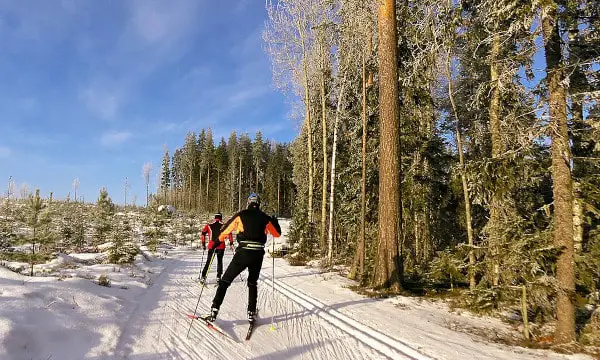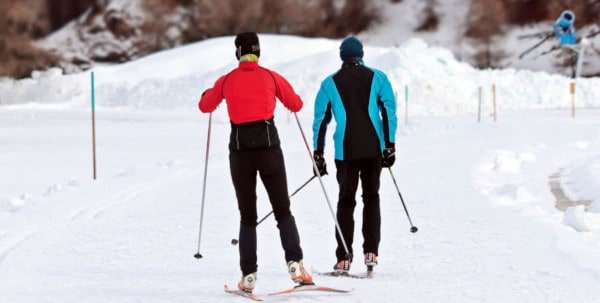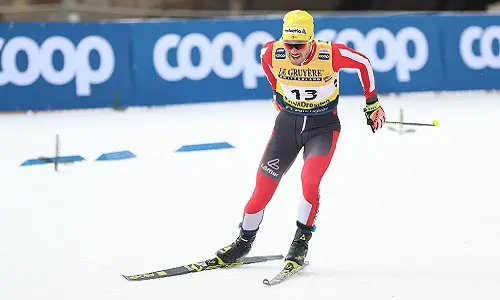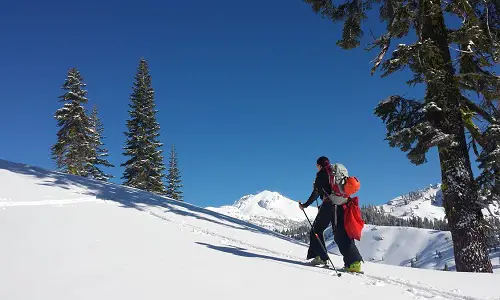Table of Contents
Are you a skate skier or someone who loves to cross-country ski and wants to look further into it? Looking for an article that defines the basic skate skiing drills perfectly? Then, you are at the right place.
5 Best Skate Skiing Drills
1. One Skate Dance Drill
One skate dance is a drill for V2 Skate technique that is very versatile and can be applied when skiing across either flats or slopes. You can use this technique on a wide variety of terrain.
Beginners should practice this on flat surfaces before moving onto hills and tapering slopes. This drill is great for helping skiers understand the functioning of their equipment better while also boosting coordination and balance.
This drill is performed initially at any place or dry land to perfect balance and coordination.
Dryland Drill:
- Stand straight on flat ground with feet that are spread apart at shoulder length.
- Partially flex your hips, ankles and knees to create the ‘tall’ position. Make sure to maintain this position throughout the drill.
- Now start shifting weight to one leg without moving your feet from the ground. Make sure you spread this weight evenly onto the foot you have chosen.
- Now flex the supporting leg by moving to a position that is similar to a single leg squat. Do not shift your weight onto your hips.
- Keep low and stay flexed while simultaneously shifting your weight to the supporting leg.
- You can now move to a straighter position but do not stop flexing your hip, knees or ankles.
- Now keep repeating this process, slowly shifting weight from one foot to the other. Make sure to flex at the right places and achieve the ‘tall position’ as needed.
Now you should practise this on the snow:
- Find a sloping hill and get to the very top to start your drill.
- Make sure you have strapped your skis properly and the tips are facing downhill before launch.
- Always use pole tips as anchors to prevent slipping.
- Go ahead and follow along with the movement you learned in the dry land drill.
- Release your poles once you are sure about launching and have properly revised the movement.
- Keep following the down, across and then up pattern until you reach the bottom of the hill.
- It should feel natural that while you shift your weight from one leg to the other you start to push the one leg unweighted to the side in a skate kicking fashion.

2. Gliding with Balance Drill
Gliding with a balance is also known as the half-skate drill. This enables beginners to learn gliding on one flat ski without losing balance. It is taught using classic tracks.
Execution:
- Find a flat classic track for practising or create your own using a ski track setter.
- Put on your skate skis and have your poles ready.
- Either pick the left or right foot to start practising. Place the ski on the side you have chosen into the track while keeping the other ski on flat ground.
- Start moving forward by making sure to balance the ski placed inside the tracks.
- The other ski should make angular outward strides and be lifted off the ground each time momentum is gained.
- Continue gliding and balancing on the ski in the track while using the other foot to stride without using it for balance.
- Make sure to glide on one foot for as long as possible once momentum is gained.
- Use your poles for balance if you feel like you will fall over, while achieving correct head and hip positions.
Repeat with the other foot and side.

3. Weight Shift Drill
The weight shifting drill is another technique used to help beginners achieve superb balance. Shifting weight smoothly and with agility is a must to be able to actually skate ski effectively.
Execution:
- Practice without skis first. Stand upright with your weight spread out across both legs.
- Keep your spine straight but not tensed and leave your arms free. Look ahead at all times.
- Jump up and down but not with too much force. You will realize that the balls of your feet touch the ground long before the front part of your feet. Your knees will also bend up in reflex.
- Now take an athletic position.
- Start shifting your weight from one foot to the other but keep your knees and legs straight. Use your hips instead.
- Repeat with skis for better balance. Look ahead at all times.
4. Jump Skate Drill
This technique is used to train individuals to maintain balance on one foot for as long as they can before actually shifting weight onto the other foot.
Execution:
- Start without skis on flat ground.
- Keep one leg straight and firm on the ground but keep your other foot at a slight angle and bend your knee forward.
- Use one foot as a spring while moving forward to the other with a swift stride in the forward direction while keeping your gaze fixed ahead.
- Alternate sides and keep jumping from one foot to the other while moving forward, but always at an angle.
- Now, practice with skis. Use one ski to create an edge while jumping onto the other ski to glide and balance. Use your knees for correct landing.
- Switch on both feet, making sure to glide and move forward on the flat ski by using the momentum created by the other foot.
- Repeat for as long as you prefer or until you feel you can glide and jump feet perfectly.
5. Half Skate Drill
Technique:
This drill is practiced using a classic track. This too helps beginners balance on one feet better but by keeping one foot in the tracks, they are also better able to understand how they can steer their movement and go outwards.
Execution:
- Find a flat classic track for practising or make your own with a track setter.
- Wear your skis and place one ski into the tracks while keeping the other on flat ground. Keep your body straight and your eyes ahead at all times.
- Start gliding on foot inside the track by using the other foot to create angular strides.
- Always push outwards and downwards while balancing on the flat ski in the tracks.
- After creating a momentum, lift the kicking foot for a few seconds and balance while gliding.
- Make sure to repeat on the other foot.
Tips for Skate Skiing
- Invest in good quality equipment. Make sure it fits and is comfortable.
- Practice these 5 drills for skate skiing to get on top of your game.
- Kick out the habit of walking feet and enable yourself to glide and be free.
- Practice going uphill without making use of ski poles.
- Try to grasp the idea of maintaining balance as this is key.
- Practice the double poling technique.
- Watch videos, demos, read up articles and get professional help if you are uncertain about what you are doing. Good luck!


